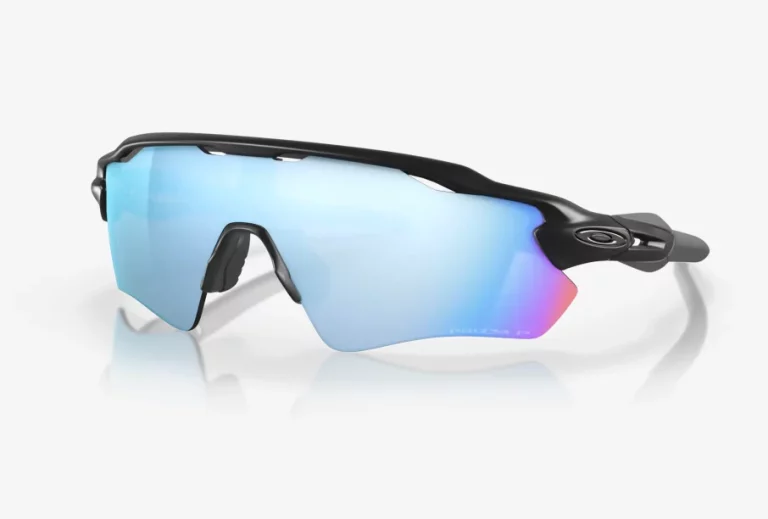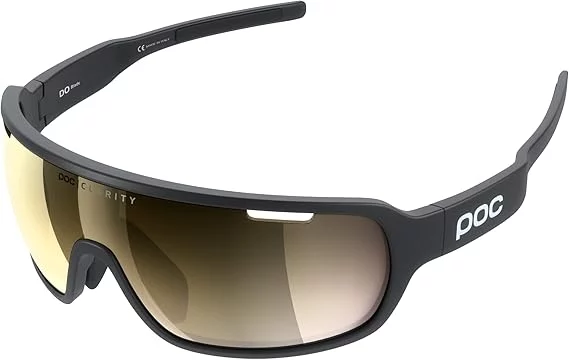A proper pair of cycling sunglasses is more than just a fashion accessory during a ride; it’s a crucial piece of equipment that can improve your performance, protect your eyes, and improve your overall riding experience. From blocking harmful UV rays to reducing glare, cycling sunglasses are designed to meet the needs of cyclists. Now, we’ll take you through the best options for cycling sunglasses, explain the key features to look out for, and provide expert advice to help you choose the best sunglasses for your cycling needs.
Why Cycling Sunglasses are necessary for every cyclist?
Cycling sunglasses do much more than just block out the sun. Here’s why they’re so important:
- UV protection: prolonged exposure to UV rays can damage your eyes. Good cycling sunglasses provide full UV protection, thus reducing the risk of cataracts and other eye diseases.
- Glare Reduction: Bright roads or reflective surfaces can cause glare. Polarized lenses help reduce glare and improve clarity and safety.
- Wind and debris protection: sunglasses protect your eyes from wind, dust, and flying debris, preventing irritation or injury while riding.
- Improved visibility: Specialized lenses (such as yellow or amber lenses) help enhance contrast and allow you to see obstacles more clearly.
Features of cycling sunglasses
Here are the most important features to consider before making a purchase:
Lens Type

- Polarized lenses: these lenses reduce glare and are ideal for bright, reflective surfaces.
- Photochromic lenses: These lenses, also known as transition lenses, adjust to changing light conditions, darkening in bright light and brightening in low light.
- INTERCHANGEABLE LENSES: Some models have interchangeable lenses depending on the weather or time of day, providing versatility for different riding conditions.
Framework design

- LIGHTWEIGHT FRAME: Choose a lightweight and durable material such as polycarbonate or carbon fiber for maximum comfort on long rides.

- Adjustable Nose Pads and Frames: Choose frames with adjustable nose pads or bridges for a customizable, secure fit.

- WRAPPED DESIGN: Wrapped frames provide better coverage to ensure no wind or debris gets in your eyes while riding.
Lens protection
- UV coating: Ensures that the lenses block UVA and UVB rays, It is very important
- Anti-scratch: Sunglasses are exposed to the elements, so scratch-resistant lenses are essential to maintaining clear vision over time.
Disclose information
- Anti-fog technology: Sunglasses with breathable or anti-fog coatings prevent fogging during intense riding or temperature changes.
Top 10 Bicycle Sunglasses 2025
2025 is coming. Here is a list of the best cycling sunglasses for cyclists with different needs, preferences, and budgets:
Summary Table
| Sunglasses | Stability | Ease of Use | Look & Feel | Price |
|---|---|---|---|---|
| Oakley Radar EV Path | 9 | 8 | 9 | 6 |
| Smith Optics PivLock | 8 | 9 | 8 | 7 |
| 100% S3 Sunglasses | 9 | 8 | 9 | 7 |
| Tifosi Veloce | 7 | 9 | 7 | 9 |
| Rudy Project Tralyx | 9 | 8 | 8 | 6 |
| Spy Optic Discord | 8 | 8 | 9 | 7 |
| Bellwether SpeedSleeve | 8 | 8 | 7 | 8 |
| Nike Tailwind | 8 | 9 | 8 | 7 |
| Julbo Aero | 9 | 8 | 9 | 7 |
| Ray-Ban New Wayfarer | 7 | 9 | 10 | 7 |
Oakley Radar EV Path

I found these sunglasses to be exceptional in terms of stability. Whether on smooth roads or bumpy trails, they never slipped, thanks to the secure Unobtanium™ grips. The wide lens coverage provided great peripheral visibility, which boosted my confidence during rides.
That said, the price might be a barrier for casual cyclists. While the lens technology is undoubtedly high-end, those not competing might find it hard to justify the cost.
Pros
Premium pricing reflects high-quality materials but limits affordability for casual users.
High-performance Prizm lens technology.
Cons
Expensive and limited lens variety.
Smith Optics PivLock Arena

Switching lenses on the PivLock Arena is a breeze, making them a favorite for rides with varying light conditions. They sit comfortably on my face without causing pressure points, even on long rides.
However, I did feel the design was a bit plain compared to other brands. It’s functional and durable, but it lacks the premium aesthetic of higher-priced competitors.
Pros
Lightweight and user-friendly lens replacement system.
Cons
Less effective for small or narrow face structures.
100% S3 Sunglasses

The aggressive design of the S3 makes it stand out, and the lens clarity is phenomenal for mountain biking. They stayed firmly in place on rough trails, even during sharp turns.
On the downside, the heavier frame was noticeable during extended rides. While great for off-road use, I wouldn’t recommend them for all-day cycling.
Pros
Rugged and stylish, with superior lens technology for color contrast.
Cons
Heavier and bulkier compared to competitors.
Tifosi Veloce

These are perfect for budget-conscious riders. The lightweight frame felt barely noticeable, and swapping lenses was straightforward, making them a practical choice for beginners.
That said, the frame durability could be improved. They feel more fragile compared to pricier options, so they may not withstand heavy use or frequent drops.
Pros
Lightweight, easy to use, and great value for money.
Cons
Not as durable or stylish as premium models.
Rudy Project Tralyx

The Tralyx offers incredible adjustability, allowing for a snug, customized fit. I appreciated the ventilation system, which kept the lenses fog-free on steep climbs.
However, the higher price tag means they’re better suited for dedicated cyclists. Casual riders might find similar functionality in cheaper alternatives.
Pros
Exceptional fit customization and lens adaptability.
Cons
High cost and niche design may not suit casual riders.
MONOLITH SPEED Polarized

I loved the stylish, everyday design of the SPY. They transitioned well from cycling to casual wear, and the polarized lenses worked wonders in reducing glare on sunny rides.
Still, they’re not specialized for extreme cycling conditions. Riders who tackle competitive or challenging terrains may prefer performance-focused models.
Pros
Stylish and versatile for casual and moderate cycling.
Cons
Not specialized for extreme cycling conditions.
Nike Tailwind

I found the Tailwind to be a solid performer with a sleek design that didn’t weigh me down on rides. The fit was comfortable and secure, which is important when you’re pushing hard on the bike.
However, while they offer good functionality, they’re not as advanced in lens technology compared to pricier options. Still, a solid choice for the price.
Pros
Stylish and versatile for casual and moderate cycling.
Cons
Not specialized for extreme cycling conditions.
Julbo Aero

These sunglasses offer a great fit and the photochromic lenses are perfect for cycling in different environments. They transition from sunlight to shade effortlessly.
However, I did find the price a little steep for those on a budget. Still, they are well worth it if you prioritize performance over cost.
Pros
Lightweight with excellent lens adaptability for varying light conditions.
Cons
Price is a bit high compared to other similar models.
POC Do Blade

The POC Do Blade has a very stylish, minimalist design, which is why I chose them for both cycling and casual use. The fit was quite secure, and I didn’t have to worry about them slipping off.
However, replacing the lenses is not as intuitive as with other models, and the price feels a little steep for what they offer. Still, if you value style and fit, they’re a solid choice.
Pros
Stylish and secure fit.
Cons
Lens replacement is more complicated, and it’s a bit on the expensive side.
Oakley Jawbreaker

The Oakley Jawbreaker sunglasses were a game-changer for my cycling performance. They stayed firmly in place even during sprints or fast descents, offering amazing stability. The clarity from the Prizm lenses is unmatched, enhancing contrast and visibility on varied terrains.
On the downside, they are a bit bulky and not as lightweight as other models. Additionally, swapping out the lenses takes a little more effort, which can be a hassle on the go. Overall, they’re fantastic for competitive cyclists but might not be the best option for casual riders.
Pros
Amazing stability for high-speed cycling and rough terrain.
Great visibility and lens clarity with Oakley’s Prizm technology.
Cons
Lens swapping can be tricky.
Slightly heavy for those looking for a lightweight option.
How to Choose the Best Cycling Sunglasses for You

Choosing the right sunglasses for your riding needs depends on your particular riding style and riding environment. Here’s a quick guide:
- For road cycling choose lightweight sunglasses with interchangeable lenses that are comfortable and aerodynamic to wear. Photochromic or polarized lenses are especially useful in varying light conditions.
- Choose sunglasses with maximum coverage and durability for mountain biking. Wraparound frames and polarized lenses help reduce glare and protect you from debris.
- For triathlon or multisport events: choose versatile sunglasses that hold up well in all conditions. Lightweight, adjustable frames work best with photochromic lenses.
Tips for Bicycle Sunglasses
- REGULAR CLEANING: Use a microfiber cloth to clean your lenses regularly. Avoid using shirts or any rough materials that may scratch the lenses.
- Correct storage: sunglasses should be kept in a protective case when not in use to avoid damage.
- CHECK FOR DAMAGE: Before each ride, check for cracked or loose parts and make sure they are in safe working condition.

